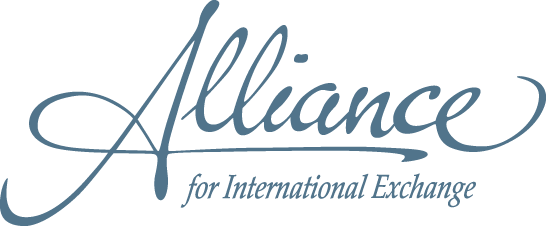By: Caroline Fox
As part of International Education Week, the Stevens Initiative at the Aspen Institute released a comprehensive report on their survey of the virtual exchange field. More than 150 respondents participated in this year’s survey, representing findings in higher education, the NGO sector, secondary education, and more. This year’s report includes five case studies, which highlight opportunities and challenges of virtual exchange, data on funding and institutional support, key takeaways, and future plans.
Before diving into the data, the report highlights some of the Stevens Initiative’s overarching best practices in virtual exchange, which include intentionality and a focus on collaboration and reciprocity of knowledge and learning.
Alliance Takeaways:
Successful virtual exchange requires flexibility.
- Most programs offer a blend of asynchronous and synchronous approaches.
- Approximately 21% of programs are conducted in English and another language, with the most used being Spanish, French, Portuguese, Mandarin Chinese, Japanese, and Arabic.
- The majority of programs take place over a course of less than 6 weeks, with 5-6 weeks being the most frequent program length, followed by 1-2 weeks.
- Providers have had to adapt to variable access to technology, often making investments in schools’ technology infrastructure, or adopting flexible programming schedules.
Collaboration and training are key.
- 81% of providers indicated that they were part of one or more virtual exchange networks or consortia.
- External initiatives, like Erasmus in the EU, are a supporting resource that allow “for capacity building and increased participation in the practice of virtual exchange.”
- 80% of providers have implemented some form of training for educators and facilitators. For example, virtual exchange providers at the Universidad de Monterrey in Mexico consulted with education professors to compare and assess the same course taught with and without a virtual exchange element.
While the virtual exchange sector continues to grow, there is much room for diversifying participation and increasing accessibility for underserved populations.
- Most current providers of virtual exchanges are based in North America, specifically the U.S. and Canada.
- As the survey report states, “While technology opened doors during the pandemic, it also sharpened digital divides and surfaced global inequities. Looking ahead to an altered landscape, it is possible that virtual exchange programs will have an even stronger role to play in addressing some of these shifts, in diversifying teaching and learning, and in enabling students and educators from a range of backgrounds to develop global competency and to do so in an equitable, accessible, and just way.”
- Many programs have taken steps to increase accessibility as well as diversity—for example, in 2023, Culturingua will launch a partner program that will “utilize certified deaf interpreters and interpreters fluent in American Sign Language and/or Libyan Sign Language.”
The Stevens Initiative’s analysis indicates that the virtual exchange field will continue to grow, but trends may fluctuate based on disruptions and numbers that may have previously correlated with the pandemic. Looking toward the future, the analysis also emphasizes the importance of local partnerships, flexible programming, and continued dedication to facilitator training. It is encouraging to see the continued innovation and research in the virtual exchange field, and the Stevens Initiative report is a useful resource for both existing providers and members of the exchange community.
